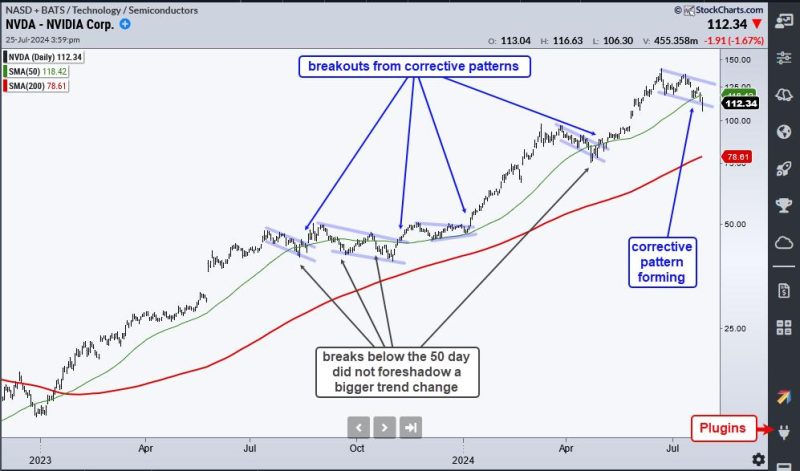NVIDIA Breaks the 50-Day SMA: Is This a Threat or an Opportunity?
NVIDIA Corporation (NASDAQ: NVDA), a leading technology company renowned for its graphics processing units (GPUs) and semiconductor products, recently witnessed a significant development in its stock performance. The stock price of NVIDIA broke below its 50-Day Simple Moving Average (SMA), leaving investors wondering whether this event signals a potential threat or an opportunity for them.
Breaking below the 50-day SMA is often seen as a bearish signal by technical analysts. The SMA is a commonly used indicator that helps investors and traders identify the general direction of a stock’s price movement over a specified period. A move below the 50-day SMA suggests a potential shift in the short-to-medium-term trend, indicating a possible downtrend in the stock price.
However, it is important to note that no single indicator should be used in isolation to make investment decisions. While breaking below the 50-day SMA may raise concerns among some investors, it is essential to consider other factors and conduct a comprehensive analysis of NVIDIA’s fundamentals and market conditions before drawing any conclusions.
NVIDIA has a strong track record of innovation and growth in the technology sector. The company’s GPUs are widely used in various applications, including gaming, artificial intelligence, data centers, and autonomous vehicles, among others. NVIDIA’s position as a key player in these high-growth markets provides a solid foundation for its long-term growth prospects.
In addition to its core business in GPUs, NVIDIA has been actively expanding its presence in other areas such as cloud computing, edge computing, and high-performance computing. The company’s strategic focus on these emerging technologies has the potential to drive future revenue growth and create value for shareholders.
Furthermore, NVIDIA benefits from a healthy balance sheet with ample cash reserves and strong cash flow generation. This financial stability provides the company with the flexibility to invest in research and development, pursue strategic acquisitions, and return capital to shareholders through dividends and buybacks.
Despite the recent break below the 50-day SMA, it is crucial for investors to maintain a long-term perspective when evaluating NVIDIA’s stock performance. Short-term price fluctuations are a normal part of the market cycle, and successful investing requires a focus on the company’s underlying fundamentals and growth potential.
In conclusion, while breaking below the 50-day SMA may raise concerns for some investors, it is essential to conduct a comprehensive analysis of NVIDIA’s business, financials, and market conditions before making any investment decisions. NVIDIA’s strong position in the technology sector, solid growth prospects, and financial stability suggest that the recent development may present an opportunity for investors with a long-term horizon.


































